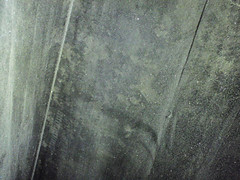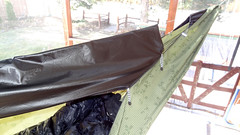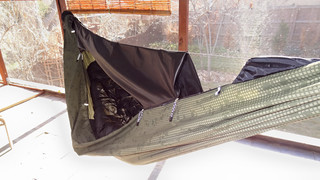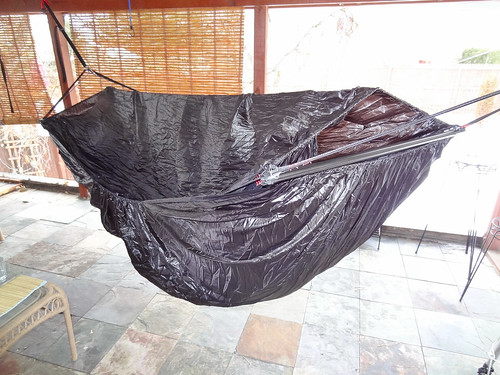Lately I have read about venting/condensation problems in various cover constructions for bridge hammocks etc. I am relative sure it also applies gathered end hammock-covers.
Tents have used venting channels forever in one form or another for the same reason.
In the picture I have tried to illustrate my idea how to implement it in hammock covers (one in etch end or side).
You will need some fabric similar to what your cover is made of.
You will also need some webbing. ĹĒ to 1Ē will do. The reason for the webbing is to make the bottom edge stiffer so I donít think Grosgrain can be used. If you have some Dacron it will also do.
You have to decide how big the venting hole should be. IMO > 3≤Ē otherwise itís not worth the effort.
Mark your desired shape for the venting cover on your hammock-cover.
Mark the hole shape but not too close to your size marking. You need room for stitching! It has to be placed near the top of the hammock-cover for prober ventilation. The hole also have to be placed high in relation to the cover triangle otherwise you will risk creating a draft channel. I would prefer a hole with round edges (less stress and chances for ripping the fabric). Burn it with a hot-knife.
You could add a patch of netting over the hole if you want to.
Cut a triangle in your desired shape and size from the extra fabric but remember to add seam allowance for a rolled hem to the sides and 2x the width of the webbing on the bottom not to forget the lower edge MUST be longer.
For this idea I would roll and sew the webbing like itís done in DIY bridge hammocks and then hem the edges.
On my sketch you can see I added 15% in length (bottom edge) to the original triangle measurements. The reason is when its 15% longer and its sewn in on to the original points it will create an arch and because it has webbing inside you or the wind cannot compress it. It will always stay open. 15% is just what looks to me as a good number but be careful not to increase it too much.
Sew the triangle to your hammock-cover and use the markings you made.
I havenít used this idea so please donít ask for measurements but I intent to use it if and when I decide to make a hammock-cover.
BTW the illustration is supposed to look something like the end of a WB Spindrift or similar constructions.
Venting.png





 Reply With Quote
Reply With Quote







Bookmarks